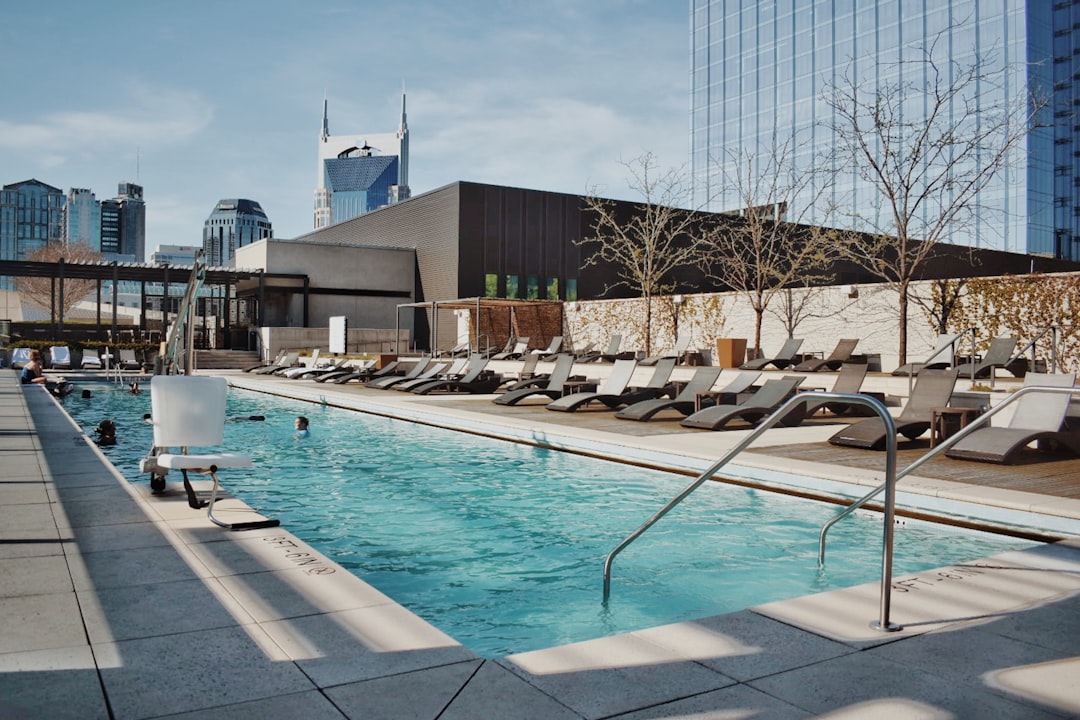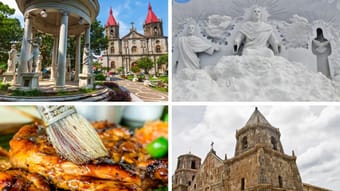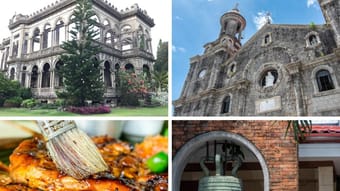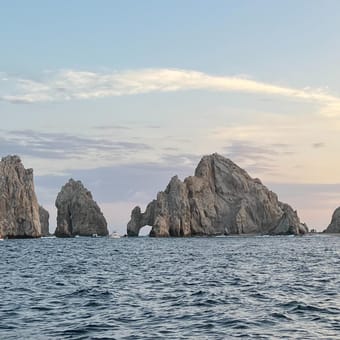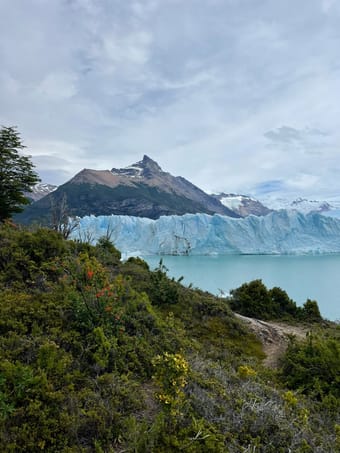Results for Thomas
Known as the live music capital of the world, Austin has it all. Grub out on award-winning BBQ, bar hop on the famous Sixth Street, or spend the day in style on the water. Whatever you’re looking for Austin is sure to deliver.
I also offer customized itineraries for Austin and other popular bachelorette destinations.
Groups • Vegetarian • Luxury • People & Culture • Shopping • Wine
Free
0
This is for the homies looking for your daily dose of caffeine! ☕️
Are you on the hunt for the best cafes in Singapore that cater to your lactose-intolerant or vegan needs? I gotchu with my personally curated list of cafes serving delicious plant-based milk options. Whether you're on a tight budget & looking for wallet-friendly options at traditional local kopitiams or hawker centres, artisanal coffee & tea, or want to soak up the vibes at cool cafes with aesthetically-pleasing ambience — this one’s for you.
✨ Cop this guide & unlock all future updates for free, plus a secret code for discounts on other guides! 👀
Gluten-free / Celiac • Vegan • Vegetarian • Halal • Foodie • Coffee • People & Culture • Budget • Luxury • Wellness • Design • Sustainable/Eco
$5.99
10
Within these pages, you will find a treasure trove of travel tips, hidden gems, and practical resources that will empower you to plan your next vacation with ease. Our aim is to equip you with all the necessary tools and information at your fingertips, enabling you to create your dream getaway, just as we did. Here is a glimpse into the topics we cover : Cities, Flights, Stays, Visas, Things to See, Getting around - Internal Commute, Booking local tours, Packing essentials, Smart hacks and Restaurants.
Focus : Krabi, Phuket, Bangkok, Pattaya
Foodie • Adventure • People & Culture • Coffee • Romantic
$46.80
$52.00
10% off
2
Barcelona - the capital of Catalonia - is a vibrant and dynamic city, full of exciting things to do. From its stunning architecture to its delicious food and lively culture, there's never a dull moment in this city. Visitors can explore iconic landmarks such as the Sagrada Familia and Palau Nacional, or stroll along the famous La Rambla promenade, taking in the sights and sounds of street performers and vendors. Barcelona is also renowned for its art scene, with world-class museums and galleries showcasing the works of famous artists like Picasso and Miro.
Catalans have their own traditional dishes. Chief among them is pork sausage both cooked (butifarra) and cured (fuet), as well as the ubiquitous pa amb tomàquet (pan con tomate in Spanish), grilled bread rubbed with tomato and garlic, drizzled with olive oil, and sprinkled with sea salt.
For something more local, try fideuà, essentially the Catalan version of paella, made with short noodles instead of rice.
Make sure to sweeten up your trip with:
- xuxo: traditional Catalan pastry with sweet cream filling and sugar coating;
- mel i mato: dessert made from fresh goat cheese drizzled with honey;
- tarta de Santiago: a Galician almond cake made with ground almonds;
- panellets: small, round pastries made from ground almonds and flavored with coffee or lemon
For drinks, have a vermut (vermouth) instead of sangria; it's served over ice and garnished with a slice of orange and/or olives.
Also, you can try Cava, which got its name back in 1970 with the idea of distinguishing it from French champagne, the word meaning ‘Cave’ or ‘cellar’. Cava is rapidly gaining prominence in the world and rivaling champagne, 95% of all Catalan cava is made in Penedès in the vineyards surrounding the village of Sant Sadurní d'Anoia, close to Barcelona.
🏵️ The famous Antoni Gaudí - Spanish architect and designer from Catalonia, known as the greatest exponent of Catalan Modernism - worked almost entirely in or near Barcelona, therefore the city boasts with his works: Casa Batlló, Casa Milá La Pedrera (you can grasp a sight of the interior while having a coffee at Cafe de la Pedrera
DON'T MISS: the gift shop is amazing), Casa Vicens, Park Güell, Sagrada Família church, etc.
⚽️ For football enthusiats: you have to take a look around Camp Nou.
💡A trip to Abbey of Montserrat would also make a great idea.
⛱️Perhaps a day trip to Costa Brava (90 min by bus)?! 😎
🛍️When it comes to shopping, make sure you visit Girona Street. Here, outlet stores welcome visitors with open arms, offering tempting deals and unique finds.
Accessibility • Budget • Coffee • Foodie • Relaxation • Shopping • People & Culture • Art
$5.00
29
There’s no more luxurious feeling than relaxing in the lobby of a high-end hotel, but if you’re not a guest, you’re likely to get kicked out. In this free guide, find out the best ways to step inside Nashville’s five most expensive hotels without spending the night or breaking the bank, usually through a dining or spa experience. I’ve also included the nearest attractions to each hotel so you can find the perfect activity to pair with your meal or treatment. And if you do feel like budgeting for a getaway, just click the “Reserve” button to book directly through Booking.com.
Architecture • Art • Boutique • Budget • Luxury • Foodie • Design • Coffee • Relaxation
Free
2
Austria is absolutely beautiful. We fell in love with the cities and the towns, the mountains and the lakes, and even the streets there.
In this guide we will be covering the beautiful cities of Salzburg and Hallstatt. 3 days might feel a bit less here, and if you've more time, you'd definitely extend your trip here. It will be worth it.
Backpacker • Couples • Digital Nomads • Groups • Female Solo • Vegetarian • Vegan • Adventure • Architecture • Art • Faith • Foodie • History • Outdoors • Photography • Romantic • Slow Travel
Free
4
Francisco Franco Pêgo
Lisboa: every relevant place by a local, split into categories and with a summary of what to expect
You know the exercise of planning what to visit in a city by searching online "what to do in XXXX" and opening 10 tabs in an attempt not to let anything escape? And then not fully understanding what were the most relevant things for your kind of traveller? Well, I've been there multiple times!!!
That's why I though that, as a local in Lisboa who has explored everything this city has to offer, I can make things easy for someone planning to visit it by creating a single source of information with all that.
86 places split into categories to make navigation and priorization easy:
1. Lisboa-exclusive places you must go to (3 tiers according to relevance)
2. Places around Lisboa you should visit (includes Sintra, Almada and Mafra)
3. Hidden gems (again 3 tiers according to relevance)
4. Old trams / Elevators / Funiculairs (you can be a fan and go around all of them or simply pick the best ones, which I refer)
5. Viewpoints (again, either go to all of them or just my top picks)
6. Things you can do around the world and here are nice as well
On top of that you've got the ultimate Portuguese food checklist with 45 things you shoult try and whithout which your trip will be incomplete (90% of them can be found in Lisboa)
My main objective with this guide is not to go into detail about each of these attractions but rather to categorize and give some hints about it so you decide whether to put it on your plan or not. If it is a monument or museum requiring a deep explanation of the hitory around it, you'll find it there.
In case you have any question while planning your trip, we can also make a quick call for free ;)
I wish you enjoy this city as much as I do and please do send me a message with feedback on this guide, as I use that to improve on it.
Backpacker • Car-free • LGBTQ+ • Female Solo • Architecture • Art • Budget • Foodie • History • People & Culture • Photography • Slow Travel
Free
3
Andalusia, located in the southern part of Spain, is known for its unique blend of cultures, delicious cuisine, and warm, sunny climate making it a captivating destination for travelers. Renowned for its Moorish architecture, visitors can marvel at the Alhambra in Granada and then visit the vibrant streets of Seville, home to flamenco dancing and lively tapas bars. The region also boasts beautiful coastlines along the Costa del Sol, picturesque white villages, and the Sierra Nevada mountains.
This guide provides recommendations of where to stay, places to eat, and what to do in Nerja, Granada, and Seville. All amazing cities in the Andalusia region of Spain!
Adventure • Architecture • History • Foodie • Outdoors • People & Culture
$5.00
0
Only the best spots to shop, wine, dine and get hyped up in the Spanish capital - a modern city that honors its historical heritage.
Passionate people from Madrid are all about getting together, enjoying life and art in all its forms. Regardless of the season, Madrid abounds in art venues, cultural manifestations and night life. However, a little bit of shopping won’t hurt either. 😉
Highlights:
🐻 El Oso y el Madroño (the Bear and the Strawberry Tree) - the symbol of the city, is a sculpture from the 2nd half of the 20th century, that represents the coat of arms of Madrid and is found on the east side of the Puerta del Sol, between Calle de Alcalá and Carrera de San Jerónimo, in the historical centre of the capital.
🐂 Corrida de toros - Spanish-style bullfighting, involves a physical contest with humans (and other animals) attempting to publicly subdue, immobilize, or kill a bull. The most common bull used is the Spanish Fighting Bull (Toro Bravo), a type of cattle native to the Iberian Peninsula. This style of bullfighting is seen to be both a sport and performance art. In a traditional corrida, three toreros (or matadores) each "fight" against two out of a total of six "fighting" bulls to death.
💃🏻Flamenco - is an art form (incorporating poetry, singing, guitar playing, dance, polyrhythmic hand-clapping and finger snapping) strongly influenced by the Gitanos, but which has its deeper roots in Moorish musical traditions. Flamenco culture originated in Andalusia, but has since become one of the icons of Spanish music and even Spanish culture in general.
🍖Jamón - is a kind of dry-cured ham that’s at the heart of Spanish culture and cuisine. There exist two great traditions of artisanal cured hams in Spain, both of which are a source of enjoyment and great pride among Spaniards:
1. Jamón Serrano - a cured country ham made from conventional pork.
2. Jamón Ibérico - produced from non-acorn fed pigs (Cerdo Ibérico) or acorn-fed variety which results in Jamón Ibérico de Bellota (considered the world's finest ham).
🥨 Churros - is a type of fried dough, made with choux pastry dough piped into hot oil with a piping bag and large closed star tip or similar shape. They can either be thin (and sometimes knotted) or long and thick, where they are known as porras or jeringos in some regions. Normally eaten for breakfast dipped in champurrado, hot chocolate, dulce de leche or café con leche.
🏟️ Football fans should be very excited about Madrid, as it hosts one of the best teams ever - Real Madrid. Visit Real Madrid’s home by taking a tour on their stadium, Santiago Bernabéu.
$5.00
23
A history and culture lover's dream trip!
🗺 This guide includes over 40 places to explore in the beautiful, bustling city of Savannah, GA.
Planning an itinerary can be stressful. Let me do the heavy lifting. This guide of Savannah is perfect for first time visitors, and Savannah frequenters alike. You'll see some of the main sites, but I threw in some of my lesser-known favorites as well! Follow this guide for an amazing experience. 🦋 ✨
Ideally, this tour suits a recommended three day stay in Savannah. However, it is a build-your-own adventure tour, which means it is flexible and helps you plan for multiple days and nights in Savannah! (as well as just one!)
· it offers over 40 lesser-known locations for you to explore
· it includes daytime and nighttime spots
· helpful notes on where to stay, how to get around, and other important, useful tips
· large range of location types:
☕️ coffee shops 🍜 Asian cuisine 🍝 Italian cuisine
🍗 Southern comfort food 🦞 seafood
🍷 vibrant bistros 🍮 dessert 🍺 secret bars, trendy new scenes, and more!
Tag me in the photos you take - I'd love to see your experience! @princessmiacore
(on Instagram, Tiktok & Pinterest)
History • Art • Nature • Foodie • Coffee • Photography • People & Culture • Slow Travel
$5.00
0
This 5-day travel itinerary to Iloilo, Philippines, will allow you to explore the rich culture, history, and natural beauty of the region.
This itinerary provides a well-rounded experience of Iloilo's heritage, culture, and natural beauty. Be sure to book accommodations and plan transportation in advance to make the most of your 5-day trip to Iloilo. Enjoy your visit!
Adventure • History • People & Culture • Nature
Free
0
This 8-day tour of Iloilo and Bacolod, both located in the Western Visayas region of the Philippines, will allow you to explore the rich culture, heritage, and culinary delights of these two neighboring provinces.
This 8-day itinerary provides a comprehensive experience of both Iloilo and Bacolod, showcasing their cultural heritage, natural beauty, and local cuisine. Be sure to book accommodations and transportation and use our dedicated link for automatic discount. Enjoy your exploration of Iloilo and Bacolod!
Adventure • History • Nature • Road Trip • Mountain • Sustainable/Eco
Free
0
Los Cabos in Mexico's Baja California Sur has always been a vacationer's hot spot, but can get a touristy reputation. On a recent trip, I curated a chill mix of art, architecture, shopping & food for those looking for more upscale relaxation & indulgence than typical spring break.
Architecture • Art • Boutique • Luxury • Foodie • Shopping • Design • Slow Travel • Beach • Relaxation
$5.00
0
This map of Krakow is an all-encompassing map designed to be the one-stop shop for everything you need to know for a stay in Krakow.
I've designed this map to be used both for pre-scouting sights and recommended restaurants, and as a map to reference what's nearby as you walk around Krakow.
It includes:
Places of usefulness: Such as main transit hubs.
Places of Interest: Popular attractions, Museums & Parks.
Restaurants: Of all price levels $/$$/$$$.
Cafes and Bars.
Shopping and Entertainment Venues.
Wieliczka - Salt Mines.
About:
Krakow's monuments and buildings make it a city unlike any other. The Wawel Castle, Clotch Hall, and St. Mary's Basilica are all absolute must-sees. The City also boasts a vibrant food scene, both of local and international flair.
Adventure • Architecture • Art • Budget • Coffee • Design • Foodie • History • Outdoors • People & Culture • Photography • Romantic
Free
7
Fancy a selfie with the world's happiest animal? 🐻
Let me show you how you to:
EAT WELL 🍒 and EXPLORE 🗺
👉 AFFORDABLY 💰
🏝 Welcome to Rottnest (Wadjemup) Island.
Included in my guides:
👉FREE activities
👉Activities WORTH paying for
👉BUDGET food options
👉GF/VEGAN food options
👉MINDFUL activities
👉PHOTO opportunities
👉TRANSPORT options
FOLLOW my instagram for more HEALTHY 🍒and BUDGET 💰travel tips 👉 @tori.wanderlust
Adventure • Foodie • Wellness • Budget • Slow Travel • Sustainable/Eco • Coffee • Beach • Relaxation • Photography • Nature • People & Culture
Free
0
DC has a way of surprising you. Once you get beyond the hustle and bustle, you’ll find a city where life just happens. It’s in the small moments—neighbors chatting at local shops, kids playing in the parks, and friends gathering over coffee. You can really feel the community spirit, making it easy to settle in and feel at home.
Then there’s Alexandria, just a stone’s throw away. It’s got a relaxed, charming vibe with its cobblestone streets and waterfront paths. It’s the kind of place where you can take a leisurely walk, grab a bite to eat, or just hang out by the water. It feels cozy and inviting, like a little escape from the city buzz.
Together, DC and Alexandria create a nice balance. DC is full of energy and excitement, while Alexandria offers a slower pace when you need a breather. Both places have their unique charm, making them feel like home to anyone who spends time there 🇺🇸
$26.00
0
Welcome to my all-encompassing guide on where to stay in Chile.
Whether you're a thrill-seeking backpacker, a lover of luxury, or someone eager to immerse yourself in culture, Chile offers a wide array of accommodations to meet every traveler's desires.
This guide will help you discover the IDEAL spot to stay, guaranteeing a memorable and cozy experience in this stunning South American destination!
Backpacker • Business • Couples • Groups • Family • Digital Nomads • Female Solo • Budget • Luxury • Relaxation • Adventure
Free
0
Ask ThatchGPT




